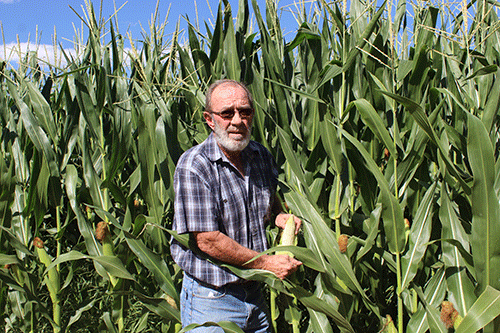Shoombe Shanyengana
In March 2020, the supply of water from the Hardap Dam to the local irrigation scheme was cut off due to low water levels, which stood at about 6.6%. This, coupled with less rainfall in the catchment areas at the time, led to low dairy production, fodder and maize harvest.
In January this year, however, the dam reached a capacity of over 88% inflow after, which NamWater decided to release some water to keep the dam level under 70%. This decision was made after the 2006 flooding that occurred in Mariental.
Today, the farmers are feeling positive as they anticipate a bumper harvest due to good rains and sufficient dam capacity.
According to vice chairperson of Agronomic Producers Association of Namibia Dawie de Klerk, at the moment, the dam level stands at around 71.3% capacity, which is sufficient for two crop seasons.
“There are approximately 500 hectares of maize planted at Hardap, which will bring a yield of approximately 5.5 to 6 000 tons, which will be marketed at the milling industry in Namibia for human consumption and the whole harvest will be taken up by the Namibian millers,” De Klerk noted.
It is also anticipated that approximately 1 200 hectares of wheat will be planted, which will result in approximately 7 500 to 8 000 tons of yield.
De Klerk added that the mindset of the farmers is good and that everybody will gain from a thriving Hardap agriculture industry this year.
A substantial number of workers who were temporarily laid off or lost their jobs due to water cuts at the scheme last year are also gradually returning to work because of the increasing number of farming activities.
Jason Kasita, who has been working at the scheme for over 20 years, is excited about the expected harvest this year. However, he still has concerns about the low salaries paid to the workers.
“The salary is not yet improved but we wait for the government and the owner to improve it. It is said that the government determines the salaries, so we await their decision because the work is a lot – but the salary is less,” said Kasita.
According to Duan Adriaanse, farm manager at Kachas farm, besides the fact that workers are back and that they are expecting a high dairy farming output, there are still challenges that the farmers are struggling with to ensure a bumper harvest and quality milk production.
He said the local farmers are competing with their South African counterparts on dairy produce – which, to this day, dominate Namibian shelves.
“We have enough water supply to produce our own feed for the farm but there are still struggles in the dairy industry because some local retailers prefer to purchase South African dairy in order to cut costs, leaving us without a market. We cannot compete with the South African price,” said Adriaanse.
The scheme is also battling an infestation of armyworms, which the farmers say is being managed by means of spraying with a chopper.
There are also ongoing negotiations with the Office of the Prime Minister and the agriculture ministry, aimed at improving the agricultural practices and increase benefits for the Hardap irrigation scheme.
The Namibian Agronomic Board has put measures in place to ensure minimal food security interruption during the Covid-19 pandemic period.
Thus, millers have secured contracts with local suppliers of staple food grains, such as white maize, wheat and pearl millet, which are an added advantage for farm owners and workers to generate income.
The good rains in the country also brought relief to the communal farmers whose livestock numbers were greatly reduced due to the reoccurring drought in the country.


